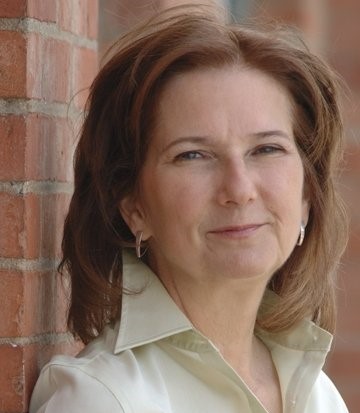M.A.H.P. ANNIVERSARY SERIES: Elizabeth Pidgeon, M.A.H.P. '12
Elizabeth Pidgeon, M.A.H.P. '12, loves opportunities to work with cultural resources as places of connection, identity, and understanding.
To celebrate the M.A. in Historic Preservation Program's 25th anniversary and the success of its alumnae/i, the Welch Center will be interviewing some of the program's graduate to gain insight on what they love about the program, what they learned in the program, and how they are working to preserve places in a rapidly changing world.
 This week's feature is: Elizabeth Pidgeon, M.A.H.P. '12
This week's feature is: Elizabeth Pidgeon, M.A.H.P. '12
What excites you most about the field of historic preservation?
The opportunity to work with cultural resources as places of connection, identity, and understanding. Particularly when the cultural connections are still intact.
What is the most interesting/unusual/challenging project you’ve worked on?
Old Santa Fe Trail Building—preservation of 24,000 square feet of adobe Spanish Colonial/Pueblo Revival office building designed by Cecil Doty, constructed by the CCC.
What is your favorite thing about the M.A.H.P. Program at Goucher?
The full-immersion summer sessions, and the chance to create class projects around real structures/sites in your own community.
What is the most important thing you have learned from the M.A.H.P. Program?
That there is enormous breadth of preservation issues, which are sensitive and far-reaching. From what I am seeing, many of the schools are turning out preservation technicians. There seems to be a lack of focus on philosophical structure. Without that, discourse and project approaches can lack relevancy, miss opportunities, and lack dimension.
How has the field of historic preservation changed over the years?
Historic preservation’s roots, as we know them in the U.S., originate from two directions. The preservation of Roman ruins, and the attempt to preserve and venerate the United State’s origins. Faced with trying to codify treatments, architects reached out to the museum conservation community to develop a vocabulary and axioms to guide approach. The Venice Charter resulted, rooted in language derived from the conservation of tangible objects. Over time preservation has encountered increasingly complex sites, stories, and issues that have expanded its framework of practice, with additions such as the consideration of cultural landscapes and the ability to document traditional cultural practices. The philosophical framework has stretched, and in many cases adapted through the power of narrative. The continuing challenges preservation faces are a natural part of growth and the accretion of deeper knowledge and understanding, a process that should be embraced.
How has the M.A.H.P. Program grown in 25 years? What changes are you most proud to have seen?
My experience with the M.A.H.P. Program is that it has been a place for discourse, consideration, and examining the facets of historic preservation. The questions will always change, I hope that the format of probing and considering multi-dimensional approaches and working with instructors who are at the forefront of the field in innovating the tools and approaches will remain.
How are you working to preserve places in a rapidly changing world? What are the challenges in doing this work?
While my work continues to focus on building pathology, conservation, and adaptive reuse in the National Park Service, I have been increasingly engaged in working with resources where the associated cultural group is still present. Being tasked with this stewardship responsibility has meant expanding the dialogue, understanding place as identity, committing time for meaningful involvement of site constituents, recognition of parallel yet disparate stories, and taking into consideration that culturally based philosophies and practices may directly conflict with NHPA guidance. I feel that it is our individual responsibility to recognize that it may be necessary to take exception when the tenets of historic preservation conflict with the philosophical beliefs of those whose culture we are stewards of, correspondingly it is our charge to find ways to mitigate the outcome in a respectful way.
What historic places do you want to see preserved in the years to come? Why?
Sites of difficult history, which may sometimes be difficult for stakeholders to accept when removal seems a means for erasure of painful memories. And, given the importance of the industrial age and labor union development, there seems to be little representation of the labor riots and atrocities associated with some of them. Lest we forget. So, site as syllabus in this case.
In your opinion, what is the future of the historic preservation field? Where would you like to see the program in the next 25 years?
Historic preservation, I hope, will continue to be more people-based and less constrained to preservation of objects. The past practice of erecting statues as reminders of history and its consequences has become anachronistic, leaving the places themselves to tell their story. History is an assemblage, it is perhaps fitting, then, that how we connect with it be more complex and encompassing.